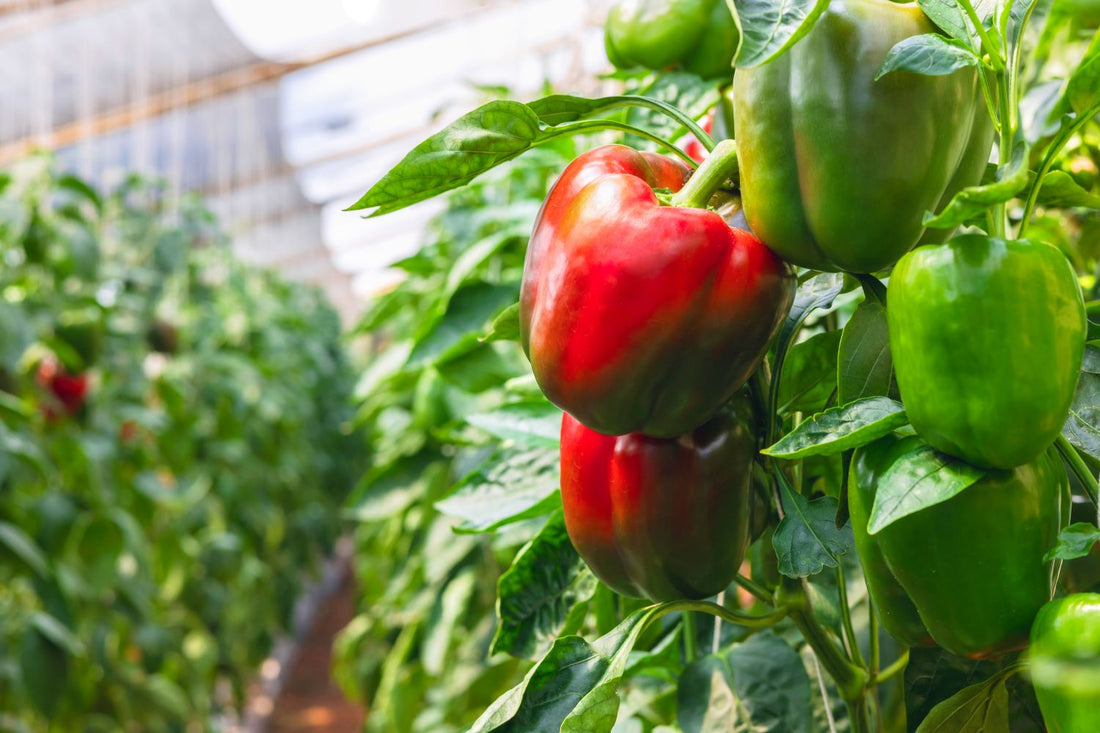Pepper fruiting can be one of the biggest challenges that growers encounter during the gardening season. Lower-than-expected plant yields tend to cause serious frustration amongst growers, even if the pepper plants received consistent nutrients and maintenance.
If you want abundant pepper yields, then understanding the nuances of pepper fruiting and using effective growing and maintenance strategies makes all the difference. We explain further below the essential techniques used to supercharge your pepper plant's productivity and increase those pepper yields you so desire.
1. Optimize Growing Conditions for Pepper Fruiting
Successful pepper fruiting hinges on providing optimal growing conditions such as ample sunlight, plenty of water, and nutrient-rich soil. This starts at the very beginning, whether you plan on growing peppers from seed or transplanting pepper seedlings outdoors.
Ensure your plants receive ample sunlight to fuel photosynthesis and encourage robust fruit development. This is especially true for seedlings that need consistent light in order to flourish. In lieu of ample sunlight - especially during the winter months - grow lights help with providing necessary light for seedlings, preventing any leggy plants and allowing them to fully develop.
- Browse through our selection of Pepper Growing Supplies!
Another thing to consider is water and soil moisture. Make sure to keep an eye on your pepper plants and how much water they receive. While there are guidelines on how often to water your pepper plants, there's no exact science to it as each plant takes in water differently. Maintaining consistent soil moisture helps to prevent stress-induced blossom drop, a common issue that can hinder fruiting.

2. Fine-Tune Soil and Fertilization to Increase Yields
Pepper plants thrive in well-draining soil with a pH range of 6.0-7.0. Besides sufficient moisture, soil needs the proper amount of nutrients and aeration necessary for seeds to grow into seedlings. Similar requirements are needed for seedlings once transplanted directly into the outdoor soil. All that being said, using two different types of soil - one for seed starting, the other for post-transplanting - helps ensure the right amount of moisture, nutrients, and oxygen capacity reach the pepper plants when at their specific growing stages.
For plants already in the soil, performing soil tests helps identify any nutrient deficiencies or imbalances, allowing growers to amend the soil accordingly. This involves supplying the plants with beneficial pepper fertilizers. Applying a balanced fertilizer high in phosphorous (the middle number on the fertilizer label) can enhance flowering and fruiting. Remember to halt fertilizing newly transplanted pepper plants so they acclimate to their new environment.
Lastly, for pepper plants growing in containers, ensure that they have a large enough pot to spread out in. Pepper plants confined to a smaller-than-normal pot won't be able to develop properly and affect the number of peppers that form.
3. Pruning Pepper Plants for Better Yields
Pruning plays a crucial role in encouraging pepper fruiting. By pinching off the first flower buds that appear (when the plant is roughly 2-3 weeks old), you allow it to channel its energy into developing a strong root system and form sturdy foliage. This enhances the plant's capability to produce higher yields and handle heavier fruits later on. If the peppers are late-maturing, however, removing flowers will prevent the plant from producing fully-ripened peppers, as it generally takes longer for them to develop.
As the plant grows, selectively prune lower leaves to increase airflow and light penetration to the lower parts of the plant, where fruits often form.
- Grow With Joe: How to Prune Pepper Plants in 5 Steps
4. Support Pepper Plants for Heavier Yields
Speaking of heavy yields, staking or supporting pepper plants can prevent branches from breaking due to the weight of the developing fruits. Peppers like bell peppers and large varieties benefit from being tied to stakes or trellises. Vertical growth also optimizes sunlight exposure, contributing to increased pepper yields.
- Find the right pepper seeds for you when you Shop By Variety today!

5. Pollination Techniques for Enhanced Pepper Fruiting
While peppers are usually self-pollinating, assisting the process can lead to better fruit set. For indoor plants, pollination needs to be done manually and not from outdoor pollinators. Without proper pollination, the pepper plant's pistil cannot complete the fertilization process to begin growing fruit, causing the pepper flower as a whole to fall completely off.
Gently shaking the plant or tapping the flowers can release pollen and facilitate pollination. For indoor plants, using a small brush or even your finger to transfer pollen between flowers can be effective in ensuring successful fertilization.
6. Mulching
Mulch provides a layer of coverage around pepper plants to shade the soil, retain its moisture and regulate the temperature, and suppress weed growth. Having consistent soil moisture is crucial for pepper fruiting, and mulching aids in maintaining these conditions, reducing the risk of stress-related fruit drop.
Aside from mulch, certain pepper companion plants provide natural shade coverage along with other benefits that protect and nurture their neighboring pepper plants. Herb plants like thyme, cilantro, and anise basil are great choices for retaining moisture and temperature control over the pepper plant soil.
7. Harvesting Time and Techniques
Lastly, knowing when to harvest your peppers is crucial for maximizing yields. Wait until the peppers have reached their desired size and color, as different varieties have distinct maturity stages. Use a sharp pair of scissors or pruning shears to cut the peppers, leaving a short stem attached to the fruit. This minimizes damage to the plant and encourages further fruiting. The more peppers you pick, the more will continue growing!
Keep in mind that different varieties mature at different times. However, there are some that you can harvest at any time throughout the maturity process.
Browse through our selection of Pepper Seeds and Live Pepper Plants today!

